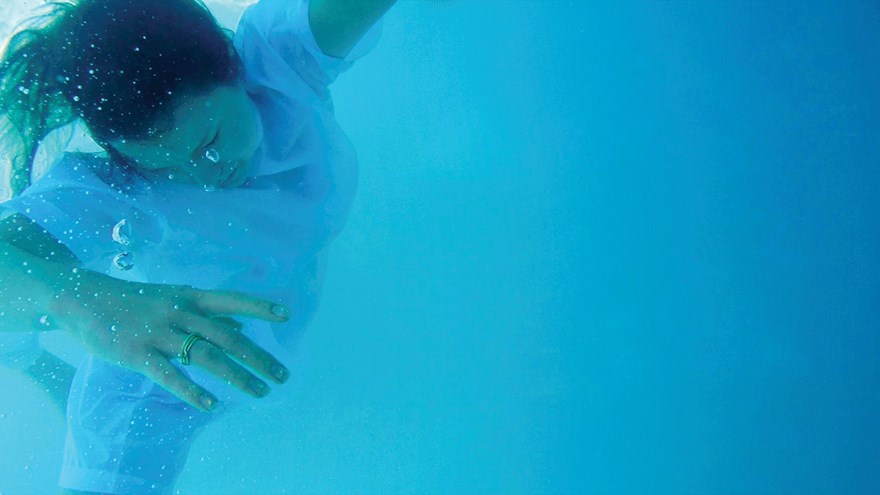Vanessa Goodman’s Never Still, Firehall Arts Centre, runs from Sept. 26 to 29 at 8 p.m. For more information go to firehallartscentre.ca.
Vanessa Goodman’s Never Still is a dense work, including layers of visuals, music, sounds, video projections and movement, largely improvised by those on stage, including North Shore dancer Lexi Vajda.
The modern dance performance, which opens at the Fire Hall Arts Centre in Vancouver on Sept. 26, not only includes video projections of the dancers floating in water – a motif throughout the performance – there are also moving sculptures created from Tyvek, a heavy-duty building material, an integral part of the set.
“We can be really physical with this material and it creates a scenographic landscape-y world for us to exist and dance in,” Vajda says.
Vajda has been touring, performing and teaching for the past few years, and this past spring she reconnected with Goodman of Action at a Distance Dance Society to start creating the production of Never Still, which explores the movement and life force of water.
Water is a one of the “guiding concepts” for Goodman’s vision, Vajda explains. The performance includes a lot of elements above and beyond the choreographers and dancers to create a feeling of fluidity. During rehearsals, the dancers have talked about body systems like circulation and how the human body is largely comprised of water and how these systems are related to fluid and water.
The multi-disciplinary show includes a video projection by Loscil (Scott Morgan) and lighting by James Proudfoot. Part of the visuals and sound comes from strips of Tyvek, house siding material hanging like ribbons on the stage that becomes part of the scene. The dancers spent a lot of time working with the Tyvek strips while creating this show, relating their bodies to the material and becoming “cozy” with it.
It has softened over time and is malleable on the stage, Vajda says, creating sculptured landscapes.
“It’s quite alive in the space,” she says. The Tyvek adds noise to the production as well, and is hard to ignore as an integral part of the sound and visuals, intrinsic to what the bodies are executing in the space.
The choreography doesn’t include a lot of dance moves, Vajda says, rather it contains “improvisational structures” and “tasks” that all the dancers have collaborated on in putting the show together.
“It’s not just dancers dancing on a stage,” she says.
As they got into rehearsals, the dancers started with body work, tuning into their physical bodies and creating different dances, including a list of physical states, as well as generating movement as a group.
“Vanessa directs and composes the piece overall,” Vajda says. “She’s arranging the pieces and refining, putting all the bits together. As dancers we have quite a bit of autonomy over how we’re dancing, how we’re experiencing the piece in the world.”
Vajda says she’s been involved lately in other collaborative projects that include improvisation and freedom in the role of the dancer. Instead of imposing movement onto a group of bodies, it’s more about “harvesting” and allowing things to emerge, Vajda explained.
We all have different body histories and perspectives, it’s a shame to ignore the diversity of everyone in the room, she says.
While dancing professionally, Vajda also teaches all ages on the side.
“I learn so much from my students… It’s a place to be experimental,” she says. “I’m more excited kind of about pushing the boundaries of what a dance class can be, often in settings that are quite conventional.”
Dancing is about more than exercising – Vajda likes to expose her students to experimental, improvisational aspects of dance, “making space for students to make their own choreographic sense and testing their own physical capacity.”
It’s not about achieving a standard, but “understanding what they have is enough and perfect at the moment.”
The current buzzword is “ephemeral,” she adds with a laugh.
“It’s kind of meditative, finding yourself in the present so you can be aware and keep moving forward instead of thinking you’re not doing it right,” Vajda says.



